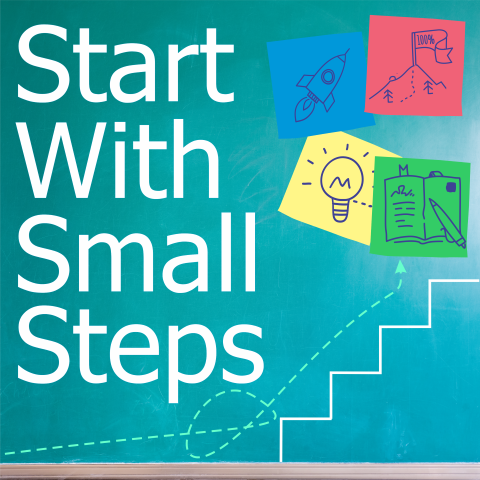Have you ever found yourself stuck in the same frustrating cycles, trying different solutions but never making real progress? Maybe you’ve struggled with weight loss, financial issues, or career growth—yet despite your best efforts, nothing changes. The problem might not be you, but rather that you’re solving the wrong problem.
Many people focus on treating symptoms rather than addressing root causes. They buy gym equipment instead of fixing their motivation, cut expenses without addressing their income problem, or change jobs without solving their lack of career direction. If you’re not solving the real problem, no solution—no matter how expensive or effort-intensive—will work.
This article will break down how to:
✅ Identify the true root cause of your problem
✅ Avoid wasting time and money on ineffective solutions
✅ Use practical techniques to solve the right problem
✅ Make lasting progress toward your goals
If you’re ready to stop spinning your wheels and start making real change, let’s get into it.
1. Define the Problem Clearly
One of the biggest reasons people fail to make progress is that their problem is too vague. Saying, “I want to lose weight” or “I want to save money” doesn’t provide any clear direction. A well-defined problem, on the other hand, makes it easier to find a solution.
Example: Weight Loss
Instead of:
🚫 “I want to lose weight.”
Try:
✅ “I need to reduce my blood sugar levels because I have prediabetes.”
✅ “I need to move more because I sit for 10 hours a day and have no energy.”
This shift in thinking helps you focus on what actually needs fixing.
Example: Finances
Instead of:
🚫 “I need to stop spending money.”
Try:
✅ “I need to track my daily expenses and see where my money is going.”
✅ “I need to find a way to increase my income by at least $500 per month.”
Once you define the problem properly, you can create targeted, effective solutions.
2. Use the Five Whys Technique
A powerful way to get to the real problem is by asking yourself why—not once, but five times. This method helps peel back the layers of an issue until you discover what’s truly holding you back.
Example: Struggling to Exercise
1️⃣ Why don’t I exercise? → “I don’t have time.”
2️⃣ Why don’t I have time? → “I work long hours and come home exhausted.”
3️⃣ Why do I work long hours? → “Because I take on too much at work.”
4️⃣ Why do I take on too much? → “I struggle to say no and set boundaries.”
5️⃣ Why do I struggle with that? → “I’m afraid of disappointing others and not being valued.”
The real problem isn’t lack of time—it’s difficulty setting boundaries. Fix that, and making time for exercise becomes much easier.
3. Identify Patterns, Not Just One-Time Events
It’s easy to blame a single event for a setback, but lasting problems are often the result of long-term habits. Keep a journal or track your behavior to spot recurring patterns.
Example: Financial Problems
Instead of thinking, “I spent too much on a new laptop, that’s why I’m broke,” look at the bigger picture. Maybe the real issue is:
- Monthly subscriptions that add up
- Frequent small purchases that seem insignificant but drain your account
- Not having a clear budget or savings plan
Identifying patterns allows you to target the real problem, not just a one-time mistake.
4. Focus on What You Can Control
Many people get stuck trying to change things that are outside their control, leading to frustration and inaction. Instead, focus on the controllable aspects of your problem.
Example: Career Growth
🚫 Out of Your Control: Your boss refuses to promote you.
✅ In Your Control: Learning new skills, applying for other jobs, or networking to find better opportunities.
Example: Weight Loss
🚫 Out of Your Control: Your genetics or age.
✅ In Your Control: What you eat, how often you move, and how well you manage stress.
By shifting your energy toward solutions you can influence, you’ll start making real progress.
5. Test Small Solutions Before Making Big Commitments
Before making drastic changes, try small experiments to see if a solution actually works.
Example: Fitness
🚫 Buying expensive gym equipment before knowing if you’ll use it
✅ Trying a 30-day gym membership or free YouTube workouts first
Example: Career Change
🚫 Quitting your job to start a business without experience
✅ Doing freelance work on the side to test your idea first
Testing small changes reduces risk and prevents you from wasting time and money on ineffective solutions.
6. Use Data, Not Feelings, to Make Decisions
Feelings can be misleading. Instead of going off intuition, track actual data.
- Trying to save money? Keep a spending log.
- Struggling with sleep? Track when you go to bed, wake up, and what affects your rest.
- Trying to lose weight? Keep a food and movement journal.
Data removes the guesswork and helps you see what’s really happening.
7. Imagine Your Future Self
A powerful way to prioritize problems is to think: If I don’t fix this now, what will my life look like in 10 years?
Example: Health
🚫 If I don’t start exercising now, will I struggle with mobility when I retire?
Example: Finances
🚫 If I don’t save now, will I be financially secure later in life?
This exercise helps you focus on problems that will have the biggest long-term impact.
8. Learn from Others Who Have Overcome Similar Issues
You’re not the first person to struggle with weight loss, finances, or personal growth. Learn from those who have successfully tackled similar challenges.
- Read books or listen to podcasts from experts.
- Join online communities or forums.
- Seek mentors or coaches.
Seeing how others solved the same problem can give you new ideas and motivation.
Conclusion: Take the First Step Today
If you feel stuck in a cycle of frustration, it’s time to ask: Am I solving the right problem?
✅ Define your problem clearly
✅ Use the Five Whys to get to the root cause
✅ Identify patterns and habits, not just one-time mistakes
✅ Focus on what you can control
✅ Test small solutions before making big commitments
✅ Use real data instead of assumptions
✅ Think about your future self and what’s truly important
✅ Learn from others who have overcome similar challenges
Solving the right problem is the key to real, lasting change. Start today by identifying one problem in your life and asking: Am I focusing on the right solution?
Your future self will thank you.
💡 Did this article help you? Share it with a friend who might need it! Also, check out A Better Life in Small Steps for more practical advice on personal growth. 🚀

